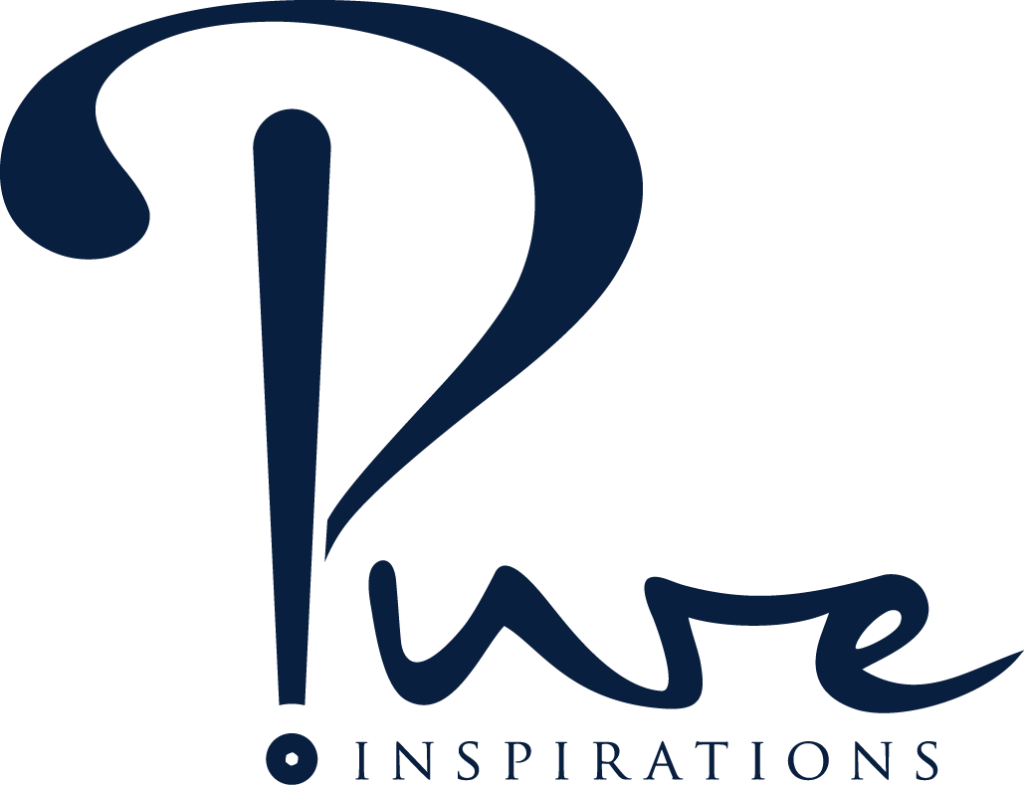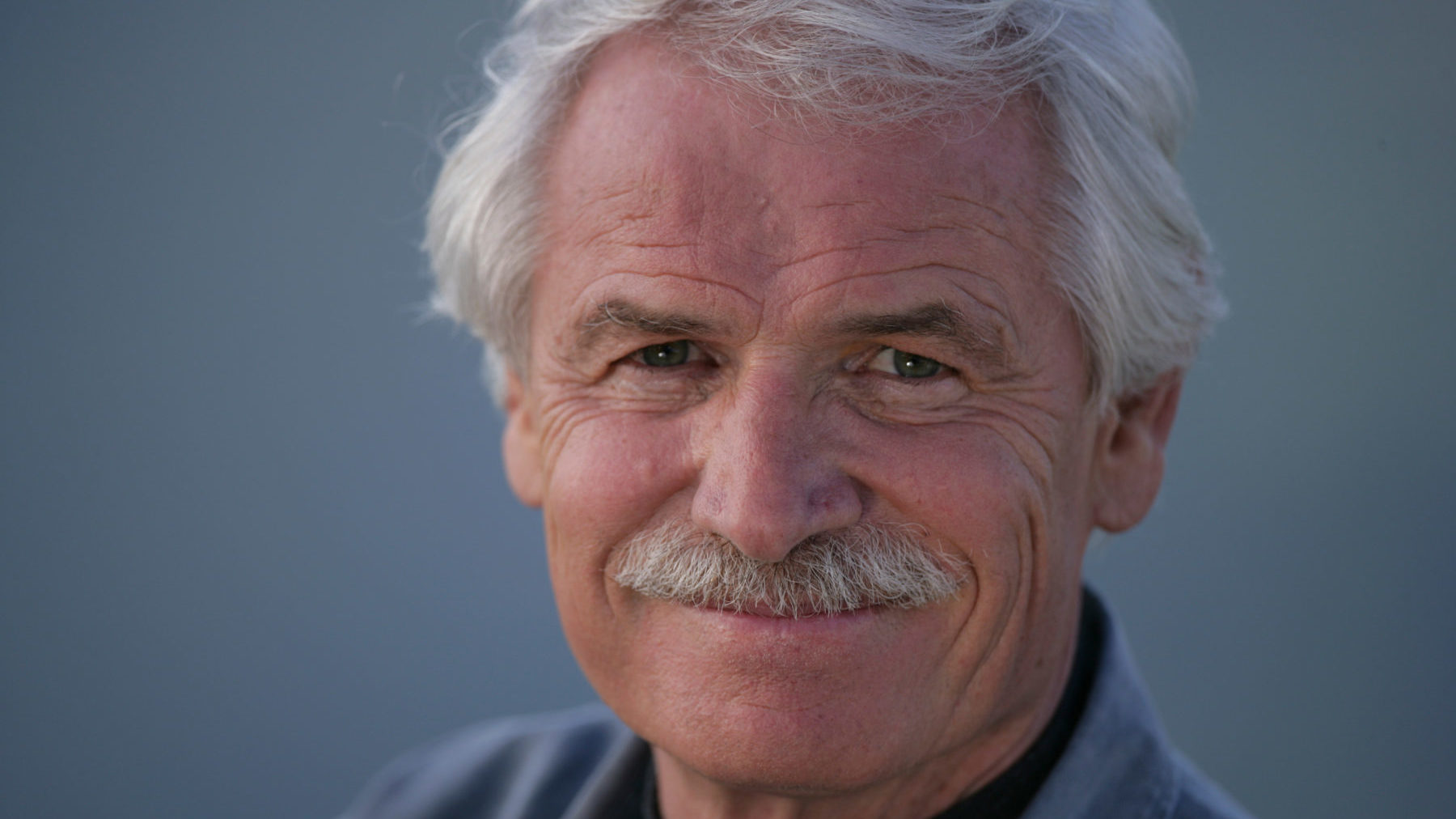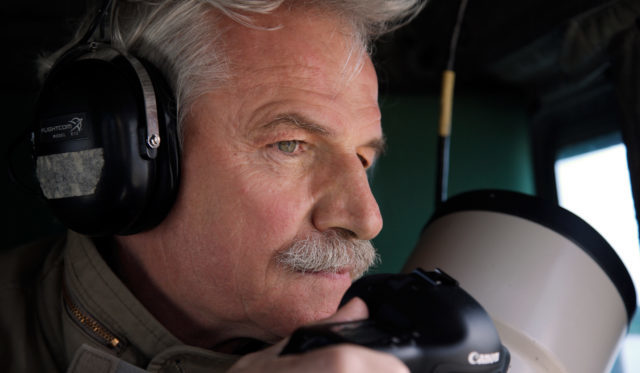Yann Arthus-Bertrand has committed his life to deepening our connections with the environment and one another. For years, I have found great inspiration in his work and have shared it with family, friends, co-workers, students, and now the PI community! As a dedicated aficionada, I have tried to keep track of Arthus-Bertrand’s on-going accomplishments. In an attempt to guide you through his chef d’oeuvres, I have compiled the biography below and included links to his photographs, books, and movies (see bio@yannarthusbertrand.com for more details).
Yann Arthus-Bertrand was born in France in 1946 where he developed a love for nature early on. At the age of 20, he settled in central France and became the director of a nature reserve. At 30, he traveled to Kenya with his wife with whom he carried out a three-year study on the behavior of a family of lions in the Massaï Mara reserve. He started using a camera to capture his observations from a hot-air balloon. He discovered the advantages of viewing his study grounds from above—the wider angle view gave him a broader and clearer understanding of habitats, resources, and behaviors. Through this project, he found his calling: to demonstrate from an elevated view point the Earth’s beauty and show the impacts of mankind on the planet. Published in 1981, his first book, “Lions”, was born of this adventure—he likes to call these lions his “first photography teachers.”
Little by little, Arthus-Bertrand became a photojournalist who focused on environmental issues, collaborating with Géo, National Geographic, Life, Paris Match, Figaro Magazine, and more. He also started a personal project on the relationship between mankind and animals, which led to the publication of his book “Good breeding and Horses“(“Bestiaux et Chevaux”) in 2006 after 15 years of work. Yann has since published a number of beautiful books portraying Horses, Dogs, and Cats.

Pink Flamingos Flight above Lake Magadi, Kenya (1°52’S -36°17’E).The flamingos regroup to feed on the proliferous microalgae and shellfish. The lake’s sesquicarbonate sodium crystals are considered some of the purest in the world. They have been exploited for over a century to produce soda ash for the glass and detergent industries.
In 1991, he founded the first aerial photography agency in the world. After the United Nations Conference on Environment and Development held in Rio de Janeiro in 1992 (also referred to as the Rio Earth Summit) brought the state of the planet’s environments into the global spotlight, Arthus-Bertrand decided to prepare a comprehensive book of photographs, “The Earth From Above” for release in 2000. Both the book and exhibitions of his photographic series achieved great success.
In 2005, Arthus-Bertrand created the Goodplanet Foundation to promote living together with greater awareness and respect for ecology and humanity. Today, the Foundation’s numerous projects include exhibits, films, books, a mobile application, an online magazine, and the Carbon Solidarity Action program, which supports projects in the fields of agriculture, forest, energy, and waste. The program focuses on the reduction of carbon footprints in modernized countries and the improvement of social and economic well-being in communities with limited technological and financial resources.
To follow and support the Goodplanet Foundation, you can subscribe to the online GoodPlanet Magazine daily or weekly, and donate to the Goodplanet Foundation. At the moment, the magazine is published in French only, but you can also follow the Environment News and Related Issues in English!
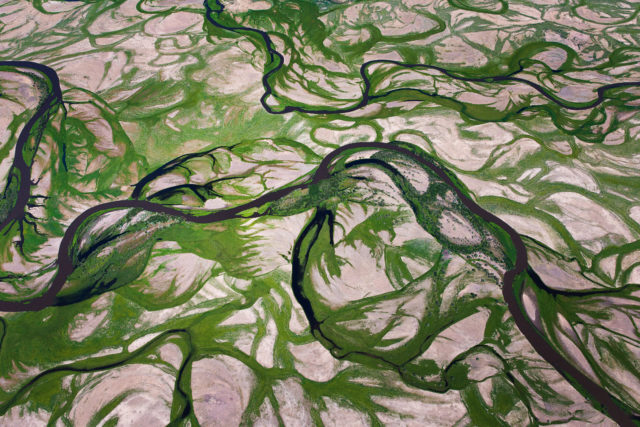
Meanders Of The Tuul, TÖV, Mongolia (47°16’ N –105° 27’ E).The river Tuul flows for more than 700 kilometers through central and northern Mongolia. This sacred river for the Mongols passes to the south of the capital, Ulaanbaatar. The exploitation of mineral resources has driven rapid growth in Mongolia, which exports coal, gold, and copper to neighboring China. In a few years, the country has become more urban and now, more than two-thirds of Mongols live in towns.
Under the Goodplanet Foundation, Arthus-Bertrand developed the “6 billion Others” project, which was recently renamed “7 billion Others”. For this project, more than 6000 interviews were filmed in 84 countries. From a Brazilian fisherman to a Chinese shopkeeper, from a German performer to an Afghan farmer, all answered the same 45 questions about their fears, dreams, and hopes to help us understand what separates and what unites us: “What have you learned from your parents? What do you want to pass on to your children? What does love mean to you?”
You can participate in the 7 billion Others project by answering the questions and adding your testimony online.
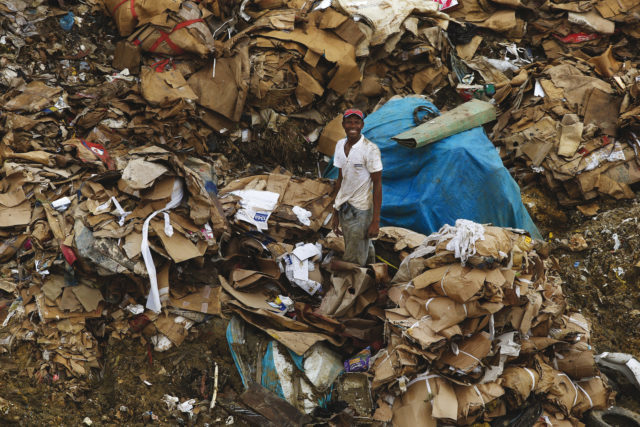
Open rubbish tip, Santo Domingo, Dominican Republic (18°28’ N – 69°53’ W). Thanks to an influx of tourists, the Dominican Republic has seen average growth in its GDP of 5.5% per year. Nonetheless, almost 40% of the population lives below the poverty level. And while the millions of tourists bring in currency, they also leave behind huge amounts of trash. And since this is a country with no waste sorting infrastructure, there are some 340 open rubbish tips.
In 2006, Arthus-Bertrand started the environmental documentary series “Vu Du Ciel” (View from the Sky), which was broadcasted on French public television and in 49 other countries. In 2009, encouraged by his television experiment, Arthus-Bertrand produced a full-length feature film, “Home”, to illustrate the state of our planet. In recognition for his commitment to creating environmental and cultural awareness, Arthus-Bertrand was designated Goodwill Ambassador for the United Nations Environment Programme on Earth Day that year.

Harvests in the Tigray region, Ethiopia (13°29’ N – 39°28’ E). The second-most populated country in Africa, Ethiopia is a largely an agrarian land: the sector accounts for 85% of all jobs and 45% of the GDP. According to the constitution, the state owns all the land, which it rents to farmers. This arrangement allows it to allocate huge plots to foreign investors, some of which cover 100,000 hectares. This phenomenon is known as land grabbing by its detractors.
In 2011, Arthus-Bertrand directed two films for the United Nations: “Of Forest and Men“, official film of the 2011 International Year of the Forest, and “Desertification”. With his continued work in film, Arthus-Bertrand founded the non-profit film production organization, “Hope”. For the World Water Forum in 2012, Arthus-Bertrand, Thierry Piantanida, and Baptiste Rouget-Luchaire directed A Thirsty World, narrating the history of water and demonstrating the importance of holistic water management.
For the 2012 United Nations Conference on Sustainable Development (commonly known as Rio+20), Arthus-Bertrand directed the film “Planet Ocean” with Michael Pitiot, and with the GoodPlanet Foundation initiated “Ocean Programme”, to demonstrate the importance of marine ecosystems. In addition, the Foundation published the book “Man and Sea”, and initiated restoration and conservation projects.
In July 2013, Arthus-Bertrand opened his photographic studio in Paris (Atelier Yann Arthus-Bertrand, 15 rue de Seine, 6eme arrondissment). This friendly place, open to all, aims to enable everyone to learn more about what happens behind each photograph.

Jalousie, a shantytown in the district of Pétionville, a suburb of Port-au-Prince, Haiti (18° 30’ 41.57’’ N – 72° 17’ 38.80’’ W). Part of the Jalousie neighborhood was painted in bright colors in 2012. But most of the houses still don’t have running water or electricity. After the 2010 earthquake, 1.3 million people found themselves homeless. Many were rehoused in camps, but reconstruction was a slow process. Worldwide, shantytowns are home to some 826 million people; and an additional 27 million people find themselves living in such circumstances every year.
In 2013, the GoodPlanet Foundation created two short films on sustainable development: “Green Economy”, which illustrates how “Building a word which is more respectful of ecosystems, and particularly of people is not only desirable but possible”; and “Living Together”, produced for the awarding ceremony of the Reinhard Mohn prize to Kofi Annan by the Bertelsmann Foundation.
In 2015, the film “HUMAN” was previewed simultaneously at the Venice Film Festival and at the United Nations General Assembly. Through its multiple stories filled with love and happiness, but also hate and violence, the film demonstrates more than ever Arthus-Bertrand’s desire to awaken collective responsibility in the context of global awareness. The same year, on the occasion of the 2015 Paris Climate Conference (COP21), Yann produced another film, TERRA, which recounts the story of life and inspire to believe in humanity.
Yann Arthus-Bertrand has now embarked on a new challenge, achieving WOMAN, which promises to awaken collective and responsible conscience!
All films produced by HOPE are available free to NGOs, associations, and schools as part of educational environmental programs.
Find a list of movies available on YouTube and Netflix in the post: Inspirational Movies From Above to Within. Download, free of charge, incredible photographs by Yann Arthus-Bertrand from more than 113 countries!
Act Now: Donate, Volunteer, Support a Project
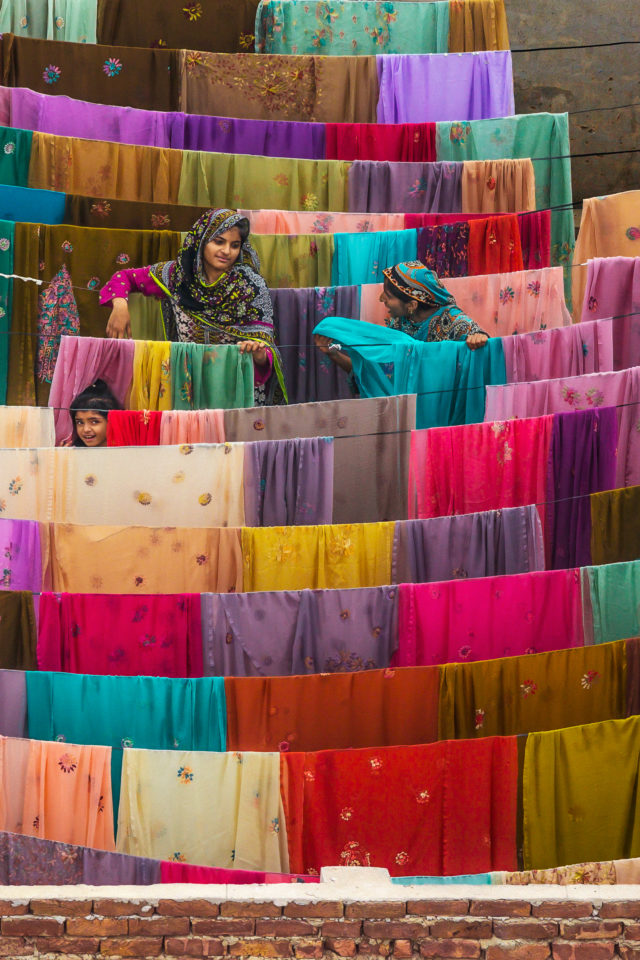
Drying Cloth in Bahawalpur, Punjab, Pakistan (29° 24’ N – 71° 40’ E). The Punjab is the economic motor of Pakistan. The textile industry there accounts for half of all exports and 30% of jobs. This sector is, however, facing some challenges: the instability of the Pakistani rupee, competition from neighboring countries, and electricity shortages preventing factories from operating at full output.
